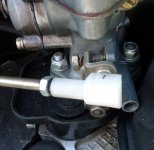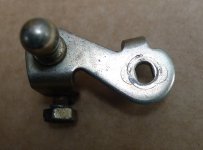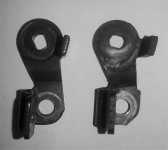nzbobc
New member
Several months back, I replaced the carb in addition to to doing a bunch of other things on the motor. The motor starts immediately, accelerates, and runs great.
The one thing I can't understand is that as things settle in, I've had to turn in the idle speed screw on several occasions as it gets to the point where it idles too slow. It does this whether the engine is cold or hot. I've checked the idle mixture over time and it's set in the sweet spot.
Any thoughts as to what's causing the idle to continually drop over time? From the photo, you can see that the screw is set pretty far in. I've had to snip off the spring a couple of times to turn the screw farther in. Back when I first did the work, the idle speed screw was about 5 turns in.
The carb is a 28IMB (on a 650cc).
The one thing I can't understand is that as things settle in, I've had to turn in the idle speed screw on several occasions as it gets to the point where it idles too slow. It does this whether the engine is cold or hot. I've checked the idle mixture over time and it's set in the sweet spot.
Any thoughts as to what's causing the idle to continually drop over time? From the photo, you can see that the screw is set pretty far in. I've had to snip off the spring a couple of times to turn the screw farther in. Back when I first did the work, the idle speed screw was about 5 turns in.
The carb is a 28IMB (on a 650cc).







